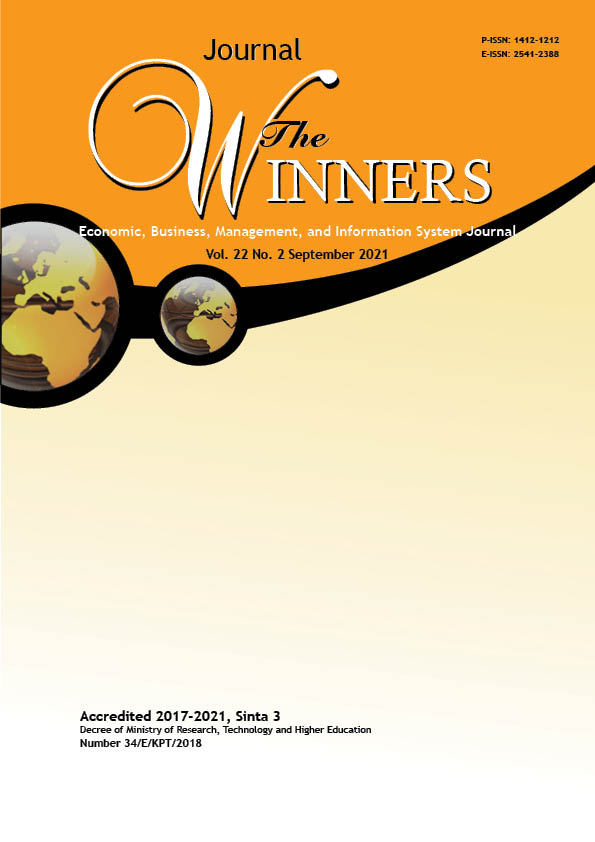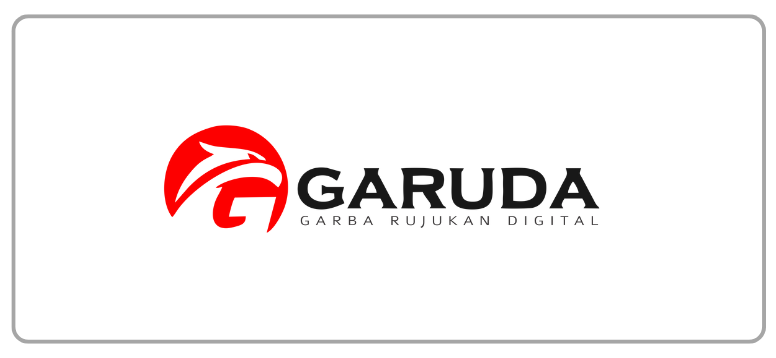Risk and Supply Chain Mitigation Analysis Using House of Risk Method and Analytical Network Process
DOI:
https://doi.org/10.21512/tw.v22i2.7056Keywords:
risk analysis, supply chain analysis, mitigation analysis, House of Risk (HOR), Analytical Network Process (ANP)Abstract
The research studied PT XYZ, a company engaged in the palm oil industry which has eleven subsidiaries spread across five provinces in Indonesia. The research focused on analyzing supply chain risks in PT A, a subsidiary of PT XYZ. The objective was to find out and reduce unexpected costs that the company may experience caused by the risks in supply chain. Furthermore, the aim was to determine priority of risk agents and risk mitigation actions. The research method was a mixed methods, which combined both qualitative and quantitative analysis to answer the research questions. Data analysis procedure involved Supply Chain Operations Reference (SCOR), House of Risk (HOR) 1, and Analytic Network Process (ANP). The SCOR method was used for mapping supply chain activities, the HOR 1 was to determine the priority of the risk agent, and the ANP was to determine the priority of mitigation actions. The results show that there are 36 risk events and 35 risk agents. 19 risk agents are categorized as priority risks and 11 preventive actions are proposed to be implemented by PT XYZ. The research suggests that the company implement mitigation actions according to priority in accordance with the research results.
References
Adams, W. J. & Saaty, R. W. (2016). Decision Making in Complex Environments The Analytic Network Process (ANP) for Dependence and Feedback. Florida.
Agustinus, M. (2017, April 27). Ada 3,98 juta perusahaan baru di RI dalam 10 tahun terakhir. Finance.detik. https://finance.detik.com/berita-ekonomi-bisnis/d-3485474/ada-398-juta-perusahaan-baru-di-ri-dalam-10-tahun-terakhir
Anggrahini, D., Karningsih, P. D., & Sulistiyono, M. (2015). Managing quality risk in a frozen shrimp supply chain: A case study. Procedia Manufacturing, 4, 252-260. https://doi.org/10.1016/j.promfg.2015.11.039
Baffoe, G. (2019). Exploring the utility of Analytic Hierarchy Process (AHP) in ranking livelihood activities for effective and sustainable rural development interventions in developing countries. Evaluation and Program Planning, 72(C), 197-204. https://doi.org/10.1016/j.evalprogplan.2018.10.017
Baryannis, G. Validi, S. Dani, S., & Antoniou, G. (2019). Supply chain risk management and artiï¬cial intelligence: state of the art and future research directions. International Journal of Production Research, 57(7), 2179-2202. https://doi.org/10.1080/00207543.2018.1530476
Ben-Daya, M., Hassini, E., & Bahroun, Z. (2017). Internet of things and supply chain management: a literature review. International Journal of Production Research, 57(3), 1-24. http://dx.doi.org/10.1080/00207543.2017.1402140
Boonyanusith, W. & Jittamai, P. (2019). Blood supply chain risk management using House of Risk model. Walailak Jorunal of Science & Technology, 16(8). 573-591. https://doi.org/10.48048/wjst.2019.3472
Cahyani, Z. D., Pribadi, S. R., & Baihaqi, I. (2016). Studi implementasi model House of Risk (HOR) untuk mitigasi risiko keterlambatan material dan komponen impor pada pembangunan kapal baru. Jurnal Teknik ITS, 5(2), 52-59. http://dx.doi.org/10.12962/j23373539.v5i2.16526
Chan, H. K., Sun, X., & Chung, S. H. (2019). When should fuzzy analytic hierarchy process be used instead of analytic hierarchy process? Decision Support Systems, 125, 1-10. http://doi.org/10.1016/j.dss.2019.113114
Chotimah, R. R., Purwanggono, B., & Susanty, A. (2017). Pengukuran kinerja rantai pasok menggunakan metode SCOR dan AHP pada unit pengantongan pupuk urea PT. Dwimatama Multikarsa Semarang. Industrial Engineering Online Journal, 6(4).
Elvandra, A. R., Maarif, M. S., & Sukardi. (2018). Management of supply chain risk in cattle slice fattening at PT. Catur Mitra Taruma. Indonesian Journal of Business and Entrepreneurship, 4(1), 88-98. https://doi.org/10.17358/ijbe.4.1.88
Finch, P. (2004). Supply chain risk management. Supply Chain Management: An International Journal, 9(2). 183-196. https://doi.org/10.1108/13598540410527079
Ghadge, A., Fang, X., Dani, S., & Antony, J. (2017). Supply chain risk assessment approach for process quality risks. International Journal of Quality & Reliability Management, 34(7), 940-954. http://dx.doi.org/10.1108/IJQRM-01-2015-0010
Hapsari, W. P. (2018, February 15). Apa yang dimaksud dengan Failure Mode Effect Analysis? Dictio. https://www.dictio.id/t/apa-yang-dimaksud-dengan-failure-mode-effect-analysis/15348
Hartono, N., Christiani, A., & Lasiman, T. (2018). Integrated model of service blueprint and house of risk (HOR) for service quality improvement. IOP Conf. Series: Earth and Environmental Science 195(1), 1-10. http://dx.doi.org/10.1088/1755-1315/195/1/012044
Kilubi, I. (2016). The strategies of supply chain risk management – a synthesis and classiï¬cation. International Journal of Logistics: Research and Applications, 1-26. http://dx.doi.org/10.1080/13675567.2016.1150440
Kusmantini, T., Guritno, A. D., & Rustamaji, H. C. (2015). Mapping of supply chain risk in industrial furniture base on House of Risk framework. European Journal of Business and Management, 7(34), 104-115.
Koberg, E. & Longoni, A. (2019). A systematic review of sustainable supply chain management in global supply chains. Journal of Cleaner Production, 207, 1084-1098. https://doi.org/10.1016/j.jclepro.2018.10.033
Kusnadi, Surarso, B., & Syafei, W. A. (2016). Implementasi metode Analytic Network Prosess untuk penentuan prioritas penanganan jalan berdasarkan tingkat pelayanan jalan. Jurnal Sistem Informasi Bisnis, 2, 105-113.
Laksmita, R. & Widodo, I. D. (2018). Fuel distribution process risk analysis in East Borneo. MATEC Web of Conferences, 154. https://doi.org/10.1051/matecconf/201815401079
Macdonald, J. R., Zobel, C. W., Melnyk, S. A., & Griffis, S. E., (2018). Supply chain risk and resilience: theory building through structured experiments and simulation. International Journal of Production Research, 56(12), 4337-4355. https://doi.org/10.1080/00207543.2017.1421787
Mavi, R. K., Goh, M., & Mavi, N. K., (2016). Supplier selection with Shannon entropy and fuzzy TOPSIS in the context of supply chain risk management. Procedia - Social and Behavioral Science, 235, 216 - 225. https://doi.org/10.1016/j.sbspro.2016.11.017
Min, S., Zacharia, Z. G., & Smith, C. D., (2019). Deï¬ning supply chain management: In the past, present, and future. Journal of Business Logistics, 40(1), 1-12. https://doi.org/10.1111/jbl.12201
Munir, M., Jajja, M. S. S., Chatha, K. A., & Farooq, S. (2020). Supply chain risk management and operational performance: The enabling role of supply chain integration. International Journal of Production Economics, 227(C), 1-14. https://doi.org/10.1016/j.ijpe.2020.107667
Pungkasanti, P. T. & Handayani, T. (2017). Penerapan Analytic Network Process (ANP) pada sistem pendukung keputusan. Jurnal Transformatika, 14(2), 66-71. http://dx.doi.org/10.26623/transformatika.v14i2.437
Putradi, C. (2017, June 22). Pengertian SCOR model dalam manajemen rantai pasok. MGT Logistik. https://mgt-logistik.com/pengertian-scor-model/
Putri, D. K. (2017). Strategi penanganan risiko pada supply chain PT Sumber Alam dengan pendekatan House of Risk. Thesis. Scribd. https://www.scribd.com/document/363109440/house-of-risk
Ramadhani, A. & Baihaqi, I. (2018). Designing supply chain risk mitigation strategy in the cable support system industry of PT. X. South East Asia Journal of Contemporary Business, Economics and Law, 16(5), 19-28.
Ratnasari, S., Hisjam, M., & Sutopo, W. (2018). Supply chain risk management in newspaper company: House of Risk approach. AIP Conference Proceedings 1931(1), 1-9. https://doi.org/10.1063/1.5024075
Sasongko, A., Astuti, I. F., & Maharani, S. (2017). Pemilihan karyawan baru dengan metode AHP (Analytic Hierarchy Process). Informatika Mulawarman Jurnal Ilmiah Ilmu Komputer, 12(2), 88. http://dx.doi.org/10.30872/jim.v12i2.650
Sekaran, U. & Bougie, R. (2016). Research Methods for Business: A Skill Building Approach (7th Ed.). Wiley.
Setiadi, Nurmalina, R., & Suharno. (2018). Analisis kinerja rantai pasok ikan nila pada Bandar Sriandoyo di Kecamatan Tugumulyo Kabupaten Musi Rawas. Jurnal Ilmiah Manajemen. https://dx.doi.org/10.22441/mix.2018.v8i1.010
Shi, D. (2004). A review of enterprise supply chain risk management. Journal of Systems Science and Systems Engineering, 13(2), 219-244. https://doi.org/10.1007/s11518-006-0162-2
Sreedevi, R. & Saranga, H. (2017). Uncertainty and supply chain risk: The moderating role of supply chain flexibility in risk mitigation. International Journal of Production Economics, 193(C), 332-342. https://doi.org/10.1016/j.ijpe.2017.07.024
Tang, C. S., (2006). Perspectives in supply chain risk management. Int. J. Production Economics, 103(2), 451-488. https://doi.org/10.1016/j.ijpe.2005.12.006
Viarani, S. O. & Zadry, H. R. (2015). Analisis pemilihan pemasok dengan metode analytical hierarchy process di Proyek Indarung VI PT Semen Padang. Jurnal Optimasi Sistem Industri, 14(1), 55-70. https://doi.org/10.25077/josi.v14.n1.p55-70.2015
Downloads
Published
How to Cite
Issue
Section
License
Copyright (c) 2021 Shelvy Kurniawan, Denny Marzuky, Rio Ryanto, Vanny Agustine

This work is licensed under a Creative Commons Attribution-ShareAlike 4.0 International License.
Authors who publish with this journal agree to the following terms:
a. Authors retain copyright and grant the journal right of first publication with the work simultaneously licensed under a Creative Commons Attribution License - Share Alike that allows others to share the work with an acknowledgment of the work's authorship and initial publication in this journal.
b. Authors are able to enter into separate, additional contractual arrangements for the non-exclusive distribution of the journal's published version of the work (e.g., post it to an institutional repository or publish it in a book), with an acknowledgment of its initial publication in this journal.
c. Authors are permitted and encouraged to post their work online (e.g., in institutional repositories or on their website) prior to and during the submission process, as it can lead to productive exchanges, as well as earlier and greater citation of published work.
USER RIGHTS
All articles published Open Access will be immediately and permanently free for everyone to read and download. We are continuously working with our author communities to select the best choice of license options, currently being defined for this journal as follows: Creative Commons Attribution-Share Alike (CC BY-SA)

















